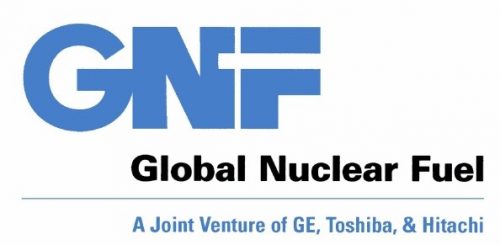Nuclear Reactors 549 - New Accident Tolerant Fuel Assemblies For Nuclear Power Plants Are Being Developed
Current nuclear power reactors are fueled with assemblies of rods. The rods contain pellets of uranium or a uranium-plutonium mixture called MOX. The long thin fuel rods in a nuclear fuel assembly are coated in a process called cladding. Zirconium is widely used for cladding but there are problems with zirconium that have contributed to research for modified or replacement cladding that is safer and more efficient.
Research on accident tolerant fuels (ATF) including new cladding materials and different designs for fuel pellets have been going on since the early 2000s. The nuclear disaster at Fukushima in Japan in March of 2011 created additional pressure on the nuclear industry to find ways to make nuclear power reactors safer.
The U.S. Department of Energy created the Enhanced Accident Tolerant Fuel program in order to develop new fuel assemblies for light water reactors. The program includes U.S. utilities, universities and the Electric Power Research Institute. Projects being supported by the DoE could result in commercial products within ten years.
Three different approaches to ATF are under development by GE’s Global Nuclear Fuel (GNF), AREVA, and Westinghouse. The DoE is providing funding and technical assistance. Lightbridge, a company in Reston, Virgina, is working on its own ATF project with zirconium-alloy cladding and a metallic uranium alloy.
GNF is working on “IronClad” fuel assemblies with help from Oak Ridge National Laboratory. IronClad ATFs utilize an alloy containing iron, chromium and aluminum. The new alloy for the cladding is supposed to improve how the fuel assemblies respond to severe accident scenarios. One of the big dangers in extreme scenarios is the leakage of high temperature steam which can cause cladding to oxidize. The steel in the IronClad coating gives it a much lower oxidation rate than the conventional zirconium alloy cladding.
GNF recently shipped test assemblies with two variations of the IronClad coating to Edwin I. Hatch Nuclear Plant near Baxley in southeastern Georgia. They also shipped a test assembly with a zirconium cladding called ARMOR. After a
planned outage for maintenance, the test assemblies will be installed in the Unit 1 reactor and will remain there for the next twenty-four months.
The Hatch Nuclear Plant is owned and operated by Southern Nuclear Operating Co. (SNO). A spokesperson for SNO said that the ATF technologies have “industry-changing safety and efficiency advantages” that they hope could make nuclear power plants safer and more efficient. They consider the upcoming test of the ATFs “…not a small step, but a leap for our industry.”
This February, the principal deputy assistant secretary for the Office of Nuclear Energy at the U.S. Department of Energy said, “An accident-tolerant fuel is an industry term used to describe new technologies that further enhance the safety and performance of nuclear materials. This can be in the form of new cladding and/or fuel pellet designs.”
The Hatch tests will be the first deployment of the new ATF assemblies but there will be more soon. GNF also plans to test IronClad and ARMOR cladding material at Exelon Generation’s Clinton Power Station in 2019. Areva and Westinghouse ATF assemblies will also be tested in plants owned by Southern Co. and Exelon.
